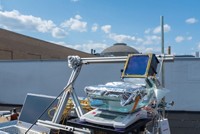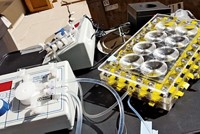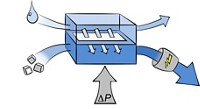Advertisement
Grab your lab coat. Let's get started
Welcome!
Welcome!
Create an account below to get 6 C&EN articles per month, receive newsletters and more - all free.
It seems this is your first time logging in online. Please enter the following information to continue.
As an ACS member you automatically get access to this site. All we need is few more details to create your reading experience.
Not you? Sign in with a different account.
Not you? Sign in with a different account.
ERROR 1
ERROR 1
ERROR 2
ERROR 2
ERROR 2
ERROR 2
ERROR 2
Password and Confirm password must match.
If you have an ACS member number, please enter it here so we can link this account to your membership. (optional)
ERROR 2
ACS values your privacy. By submitting your information, you are gaining access to C&EN and subscribing to our weekly newsletter. We use the information you provide to make your reading experience better, and we will never sell your data to third party members.
Sustainability
Device uses cotton threads to capture water
Cotton threads make the design lightweight and scalable, researchers say
by Tien Nguyen
April 18, 2019
| A version of this story appeared in
Volume 97, Issue 16

Two-thirds of the world’s population experiences water scarcity at least one month a year, according to the United Nations. Cooling towers in thermoelectric power plants are major consumers of fresh water. Pairing these towers with water vapor–capture systems could lessen industrial freshwater use, leaving more of the essential resource for people to drink. But these systems are too costly or use too much energy to be competitive.
Now, researchers at the University of California, Los Angeles, led by Yongho Sungtaek Ju have improved the efficiency of one such system, called humidification-dehumidification (HDH) desalination. Like previous versions of the technology, the approach collects condensed water from humidified air. With the help of some cotton strings, Ju’s team built a device with a condensation rate per volume up to three times as high as that of previous designs (Sci. Adv. 2019, DOI: 10.1126/sciadv.aav7662). In the new device, cold water beads traveling down cotton threads trap water vapor from hot, humidified air being blown upward. The cotton string–based device is lighter than similar devices made of metal and glass, Ju says.
The device’s simplicity is impressive and may minimize the loss of water vapor to diffusion in the air that is typical of HDH systems, says Massachusetts Institute of Technology engineer Evelyn Wang.





Join the conversation
Contact the reporter
Submit a Letter to the Editor for publication
Engage with us on Twitter